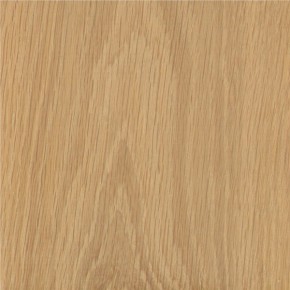Description
Color/Appearance: Heartwood is light reddish/yellowish brown, sapwood is yellowish white. Heartwood color tends to be paler than Ponderosa Pine, and isn’t always clearly demarcated from the sapwood. Lodgepole Pine commonly has pronounced dimples on flatsawn surfaces, (which are vaguely similar in overall appearance to Birdseye Maple). Such figure can help distinguish Lodgepole Pine from most other pines which lack this feature, with the exception of Ponderosa, Jeffrey, and Jack Pine, which also have similar—though usually less pronounced—dimpling.
Grain/Texture: Straight grained with medium texture.
Endgrain: Medium-sized resin canals, numerous and evenly distributed, mostly solitary; earlywood to latewood transition fairly abrupt, color contrast usually low; tracheid diameter medium-large.
Rot Resistance: The heartwood is rated as moderate to low in decay resistance.
Workability: Lodgepole pine works well with both hand and machine tools. Glues and finishes well.
Odor: Lodgepole Pine has a faint, resinous odor while being worked.
Allergies/Toxicity: Working with pine has been reported to cause allergic skin reactions and/or asthma-like symptoms in some people. See the articles Wood Allergies and Toxicity and Wood Dust Safety for more information.
Pricing/Availability: Lodgepole Pine should be widely available as construction lumber for a modest price. Some Lodgepole Pine is mixed with Ponderosa Pine and sold together as construction lumber under the stamp “PP/LP”. It is also mixed with various species of spruce, pine, and fir and sold under the group abbreviation “SPF.”
Sustainability: This wood species is not listed in the CITES Appendices, and is reported by the IUCN as being a species of least concern.
Common Uses: Veneer, plywood, sheathing, subflooring, boxes, crates, posts/poles, interior trim, cabinetry, and construction lumber.
Comments: So named because Native Americans used poles of this tree species for tipis and lodges. There are at least three subspecies of Lodgepole Pine, (sometimes viewed as varieties rather than subspecies), and the species can vary from short, shrub-like trees to tall and slender trees suitable for poles and processed lumber. (Because of their generally narrow trunks, Lodgepole Pine lumber can sometimes be separated from Ponderosa Pine on the basis of the width and clearness of the wood—Ponderosa Pine usually furnishes wider, more knot-free wood than Lodgepole Pine.) Recent infestations (1990s and 2000s) by the mountain pine beetle (Dendroctonus ponderosae) have caused widespread death of Lodgepole Pine trees in Colorado and Wyoming. The beetles lay eggs under the bark of an infested tree, carrying with it a blue stain fungus (Grosmannia clavigera) which inhibits the natural defenses of the tree against the beetle (and discolors the sapwood a grayish blue). When the beetle larvae emerge and feed under the bark, the tree dies. The discolored lumber is sometimes sold under the name “Beetle Kill” or “Blue Stain Pine.” Although Lodgepole Pine is technically classified as a yellow (hard) pine, it shares many characteristics with white (soft) pines, having a considerably lower density than the yellow pine species found in the eastern United States.
Related Species:
- Austrian Pine (Pinus nigra)
- Caribbean Pine (Pinus caribaea)
- Eastern White Pine (Pinus strobus)
- Jack Pine (Pinus banksiana)
- Jeffrey Pine (Pinus jeffreyi)
- Khasi Pine (Pinus kesiya)
- Limber Pine (Pinus flexilis)
- Loblolly Pine (Pinus taeda)
- Longleaf Pine (Pinus palustris)
- Maritime Pine (Pinus pinaster)
- Ocote Pine (Pinus oocarpa)
- Patula Pine (Pinus patula)
- Pinyon Pine (Pinus edulis)
- Pitch Pine (Pinus rigida)
- Pond Pine (Pinus serotina)
- Ponderosa Pine (Pinus ponderosa)
- Radiata Pine (Pinus radiata)
- Red Pine (Pinus resinosa)
- Sand Pine (Pinus clausa)
- Scots Pine (Pinus sylvestris)
- Shortleaf Pine (Pinus echinata)
- Slash Pine (Pinus elliottii)
- Spruce Pine (Pinus glabra)
- Sugar Pine (Pinus lambertiana)
- Sumatran Pine (Pinus merkusii)
- Table Mountain Pine (Pinus pungens)
- Western White Pine (Pinus monticola)
- Virginia Pine (Pinus virginiana)
Related Articles:
- Pine Wood: An Overall Guide






Reviews
There are no reviews yet.